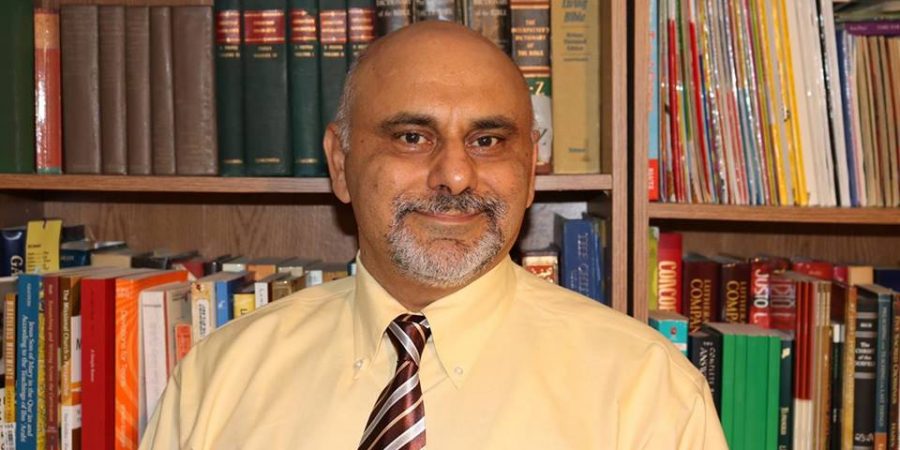In particular, the rising numbers of economic and political immigrants into the United States, have made mission an important task.
The Christian Mission Today, Charms and Challenge

“16 Now the eleven disciples went to Galilee, to the mountain to which Jesus had directed them. 17 And when they saw Him they worshiped Him, but some doubted. 18 And Jesus came and said to them, ‘All authority in heaven and on earth has been given to me. 19 Go therefore and make disciples of all nations, baptizing them in the name of the Father and of the Son and of the Holy Spirit, 20 teaching them to observe all that I have commanded you. And behold, I am with you always, to the end of the age.’” – Matthew 28 (ESV)
In the past, it was easy for Christians of North American to live apart from those of other religions and beliefs. Because of immigration and the social media, that has changed. Today we live in a global village. With so many immigrants in our proximities, mission takes place at home, not only faraway in places called abroad, as well as on social media.
In particular, the rising numbers of economic and political immigrants into the United States, have made mission an important task. There was a time when the West was a stronghold of Christianity. That has changed. Today we need to take into account that other religions and Christianity coexist, often in close proximity. Recent statistics show that the greatest growth for Christians in the last two decades occurred on the continent of Africa. By comparison, Christian denominations in North America saw an overall decrease of members. That decrease caused not only by a loss of membership through secularization, but also by a dwindling birthrate among those who are Christians. The decline and shift of Christianity is occurring in all Western countries. Today, less than 45 percent of Caucasian Europeans claim to be Christians, whereas one hundred years ago, it was still 80 percent. Over the next twenty-five years, the Caucasian portion of global Christianity will decline even further, as Philip Jenkins predicts in his book The Next Christendom: The Coming of Global Christianity. This that mission opportunities abound in North America. The mission task becomes even more pertinent as one looks at the current immigration of non-Christians from Asia.
Since North America, in particular, has become a mission field, the Church in the West faces the dilemma of where to concentrate their efforts. Should mission continue predominantly as an enterprise that sends people from one country to another, or should it focus on reaching the lost at home? Here is where questions of economics and priority of needs can intersect the mission task. Those who ask such questions do not intend to undermine the missionary enterprise overseas, but they would prefer to place a greater emphasis on mission in North America.
Mission efforts take place all over the United States to bring the Church to areas where suburban sprawl continues and where foreign non-Christian communities settle. The harvest is waiting, as Donald Moorman points out in his book, Harvest Waiting: “Now, many new strangers have appeared on our doorstep, and we have the opportunity to take them in, minister to them and welcome them to the Family of God and the grand American mosaic.” Indeed, most congregations have begun to notice the challenge of mission in their own particular context.
The call for mission in the home country and that of placing it predominantly in local congregations has not diminished the overall need and support for overseas mission. This is apparent from the statistical overview that David Barrett and Todd Johnson provide in World Christian Trends AD 30-AD 2200: Interpreting the Annual Christian Megacensus. Therein they explain how Christianity will fare in the next fifty years. In AD 2000, the number of the unevangelized in the world actually had not changed much from 1976. And for the next fifty years, Christianity will remain a steady 33 to 34 percent of the world’s population. If Barrett’s prognosis is true, Christianity obviously will not make a larger impact than it already does. At the same time, however, Christians cannot accept the status quo; they must intensify the missionary task. To underscore the enormity of mission, literature frequently refers to the 10/40 window. This window depicts the regions between 10 and 40 degrees latitude north of the equator that contain not only the world’s greatest population but also the major world religions: Islam, Hinduism, and Buddhism. Within these regions especially, missiologists have identified a multitude of unreached people groups. In fact, 57 percent of the world’s population—three billion souls—are completely without Christ. Of this percentage, about 1.6 billion people continue to lead an isolated existence without the Bible and the Christian faith presented in the native language. If Barrett and Johnson’s statistics are true, then we ought to inquire into the reasons why the Christianity segment of the population in the twentieth century has not exceeded 34 percent and why some sectors of the world’s population have no Christian presence. First, according to Barrett, churches rarely deploy missionaries to areas where heavily non-Christian populations exist. He observes that “nine out of ten missionaries are sent out to work among peoples already contacted by the Christian message, and in some cases already heavily Christian.” The result is that Christian mission concentrates more than 95 percent of its efforts in countries where local Christians could take on missionary tasks themselves. What is the solution? Barrett argues that church bodies and their societies should deploy missionaries proportionally to the non-Christian and unevangelized populations in certain countries he identifies as World C. Then the number of missionaries present in World C would increase even as the number would decrease elsewhere. But even if churches were to change their strategy as Barrett suggests, two other factors—the human care issues and the worldwide resistance to Christianity—continue to significantly curb Christianity’s growth beyond 34 percent worldwide and would make the deployment of missionaries into unreached regions difficult. The second factor that curbs Christianity’s growth and demands its resources is the social problems of this world among Christians and non-Christians alike. As a result, missionaries who are active in well-Christianized regions such as central and southern Africa will continue to reach not just the spiritually lost but also those in need of physical care. The twenty-first century, like the twentieth century, has incredible social problems among Christian and non-Christian populations alike. War, AIDS, COVID-19, Ebola, environmental disasters, water shortages, child labor, and urban problems and other calamities continue to plague the world’s population. The third and final reason why Christianity has not grown beyond the level of 34 percent of the world population is because of non-Christian opposition to Christianity. The Evangelical Dictionary of World Missions starkly depicts the various forms of resistance: Current estimates are that roughly 150,000 Christians are martyred each year, down from a peak of 330,000 prior to the demise of communist world powers. Some project that the numbers will increase to 600,000 by A.D. 2025, given current trends in human rights abuses and growth of militant religious systems. Those inflicting contemporary Christian martyrdom include political regimes with counter-Christian agendas (e.g. official atheistic powers, such as China, and the former Soviet Union); sociopolitical regimes enforcing religious restrictions (e.g. Egypt, Sudan); ethnic tribal regimes bent on eliminating minorities (e.g. Sudan, Rwanda, and Burundi); and religious regimes (e.g. Muslim countries in which Sharia is the official legal system).
MISSION AND OPTIMISM
As we look at these three factors that seem to curb Christian mission, it becomes difficult to share the expansionary optimism of those who have and continue to envision total world evangelization. Christianity has voiced its optimism in this regard on repeated occasions. In 1910, at the time of the first World Mission ConferenceWorld in Edinburgh, dignitaries and representatives made the visionary slogan of “evangelization of the world in this generation” their own, as many other conferences and revival meetings had done in preceding decades. Many Evangelical groups conceived of mission in unrealistically optimistic terms. Mission became a watchword for “scintillating missionary optimism,” an enthusiasm and belief in an unhindered and rapid Christian expansion and transformation of the world. Some of that optimism may have been the result of progressivism in the Romantic period before the Great War. Today, this optimism has surfaced again. In the late 1980s many denominations and movements prepared for global evangelization in the forthcoming decade (the 1990s), which they declared to be the decade of evangelism. Denominations and movements of every kind—whether Protestant, Evangelical, Ecumenical, Roman Catholic, or Pentecostal/Charismatic—launched global plans and made solemn pledges to complete Christ’s commission on earth in that decade. But as Barrett points out, the results of such campaigns were disappointing. The envisaged ten-year period of unstoppable expansion of Christianity did not materialize. Despite an overall increase in expenditure during that period (topping more than $70 billion), Christianity made no substantial progress. Christianity should be realistic in terms of goals and obstacles in mission work. Here we would do well to limit our understanding and wisdom in light of God’s purpose and intentions: “Trust in the LORD with all your heart, and do not lean on your own understanding. In all your ways acknowledge Him, and He will make straight your paths” (Prov. 3:5–6). All the obstacles to mission—stark opposition, financial constraints, theological confusion about the actual nature of mission, etc.—gnaw at the confidence placed in our efforts. Although missionaries have access to improved technology and medicine to check many of the hazards that plagued foreign mission decades ago, other factors challenge mission. The gap between Western economic wealth and poverty in other countries is widening and creating obstacles for missionaries and their perceived identity and purpose. Additionally, the surge of new diseases and crime make mission today a precarious and daunting task. One thing needs to be stated as we look at the growth/decline and distribution of Christian populations. It is impossible to follow Barrett’s advice of relocating missionary personnel to specific non-Christian countries. Careful consideration reveals that no country is exempt from receiving missionaries. The so-called “plum targets”—that is, countries with a higher concentration of Christian populations—might not be that plum after all. In fact, the post-Christian context in the West makes the situation extremely difficult for any missionary endeavor. Congregations and denominations may be more attracted to the so-called unreached areas of the world than to Western countries where the Gospel has been preached previously. Yet the configuration of Christian populations in the world is extremely volatile and not static; it may diminish or move on from one area to another, like a thundercloud shifts after it has dropped rain over a certain area. Christian mission is always on the move.
THE SHIFT IN THE MISSIONARY TASK
Issues pertaining to the shift in populations all over the world and how that shift impacts Christianity gives rise to the important discussion about the missionary task itself as it embraces issues of implementation. Let me briefly shed some light on this discussion. In the section above, I observed that mission remains an indispensable task in the life of the Church wherever she exists, both at home and abroad. Scripture speaks of a commission to lose from sin that will remain with the Church till the end of time: “And this gospel of the kingdom will be proclaimed throughout the whole world as a testimony to all nations, and then the end will come” (Matt. 24:14). None other than the Lord Himself placed on His disciples and His Church the mandate for the proclamation and Baptism of “all nations” (see Matt. 28:18–20).
For us today the question is not whether mission should be done; rather, it is how and by whom.
The implementation and strategic execution of mission is indeed an interesting topic of discussion, and the following articles that will engage that subject.
Adapted from, Mission from the Cross, Detlev Schulz. Concordia Publishing House.
Read more news at XPian News… https://xpian.news

Hesham Shehab
Adjunct Faculty at College of DuPage, Formerly Adjunct Faculty at American University of Beirut and Pastor at Peace Lutheran Church Lombard, IL Name pronounciation: HI-shahm SHI-hab Hebrews 12: 4 & Philippians 1: 29




Comments are Closed